Blog
 30 Jun 2025
30 Jun 2025
Is That Just Acidity or Something More Serious?
Everyone experiences acidity or heartburn once in a while — maybe after a spicy meal or late-night binge. But what if it happens frequently? What if that “burning” in your chest or abdomen is not just acidity, but a warning sign of a deeper issue? At Sunshine Surgical Hospital, we often see patients who ignore digestive symptoms for weeks or…
Read More "Is That Just Acidity or Something More Serious?"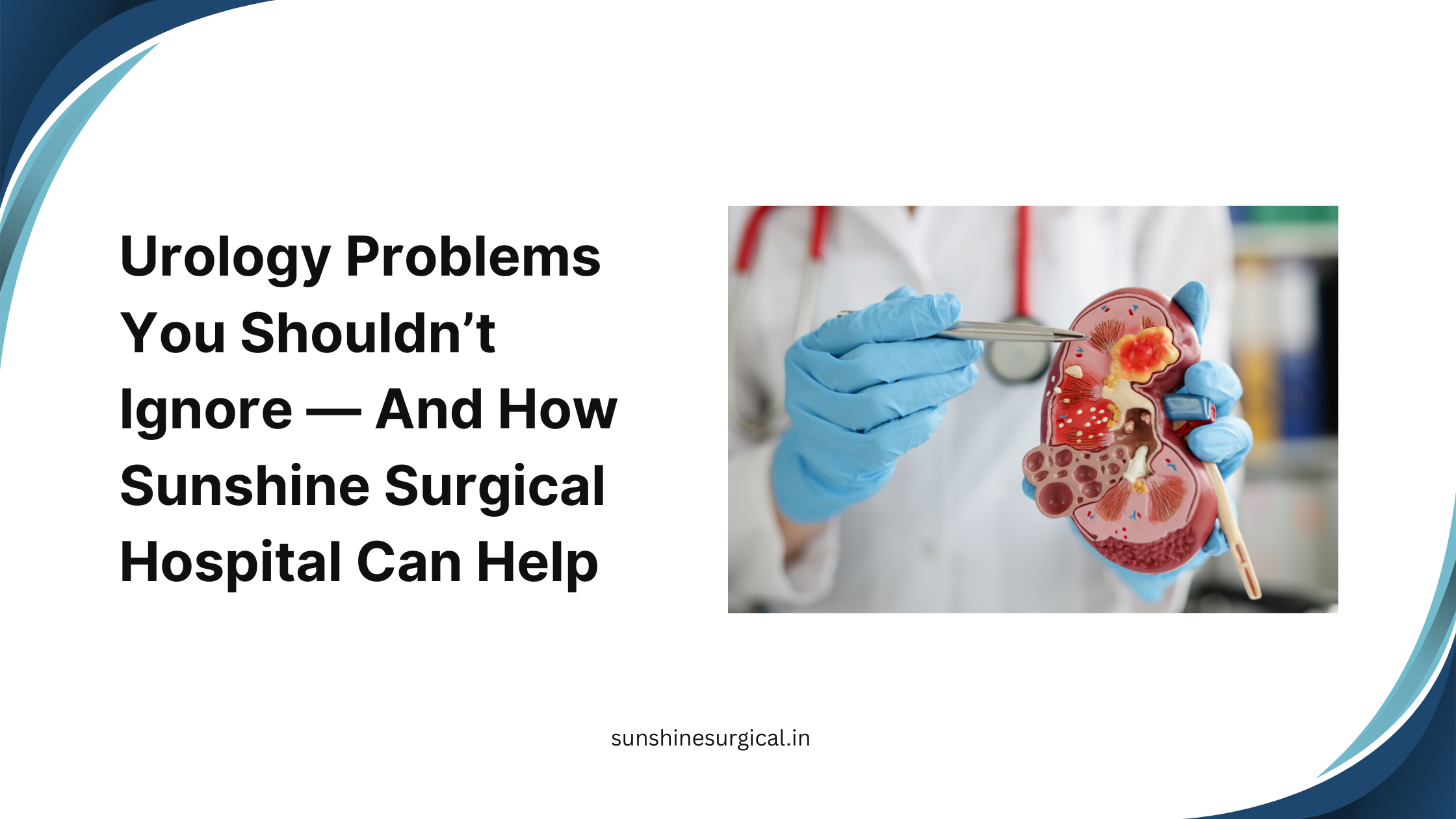 25 Jun 2025
25 Jun 2025
Urology Problems You Shouldn’t Ignore – And How Sunshine Surgical Hospital Can Help
Urology may not be a common topic at the dinner table, but it plays a critical role in your overall health — especially when it comes to the kidneys, bladder, urinary tract, and male reproductive system. At Sunshine Surgical Hospital, our experienced urologists diagnose and treat a wide range of urological conditions with precision, compassion, and the latest technology, including…
Read More "Urology Problems You Shouldn’t Ignore – And How Sunshine Surgical Hospital Can Help " 17 Jun 2025
17 Jun 2025
Is It Time to See a Specialist? Don’t Ignore These Symptoms
We all have moments when we brush off symptoms — thinking it’s “just stress,” or that it will “go away on its own.” But certain signs could be your body’s way of asking for professional help. At Sunshine Surgical Hospital, Ahmedabad, we believe early diagnosis is key to faster, easier recovery. Let’s talk about 10 warning signs you shouldn’t ignore…
Read More "Is It Time to See a Specialist? Don’t Ignore These Symptoms "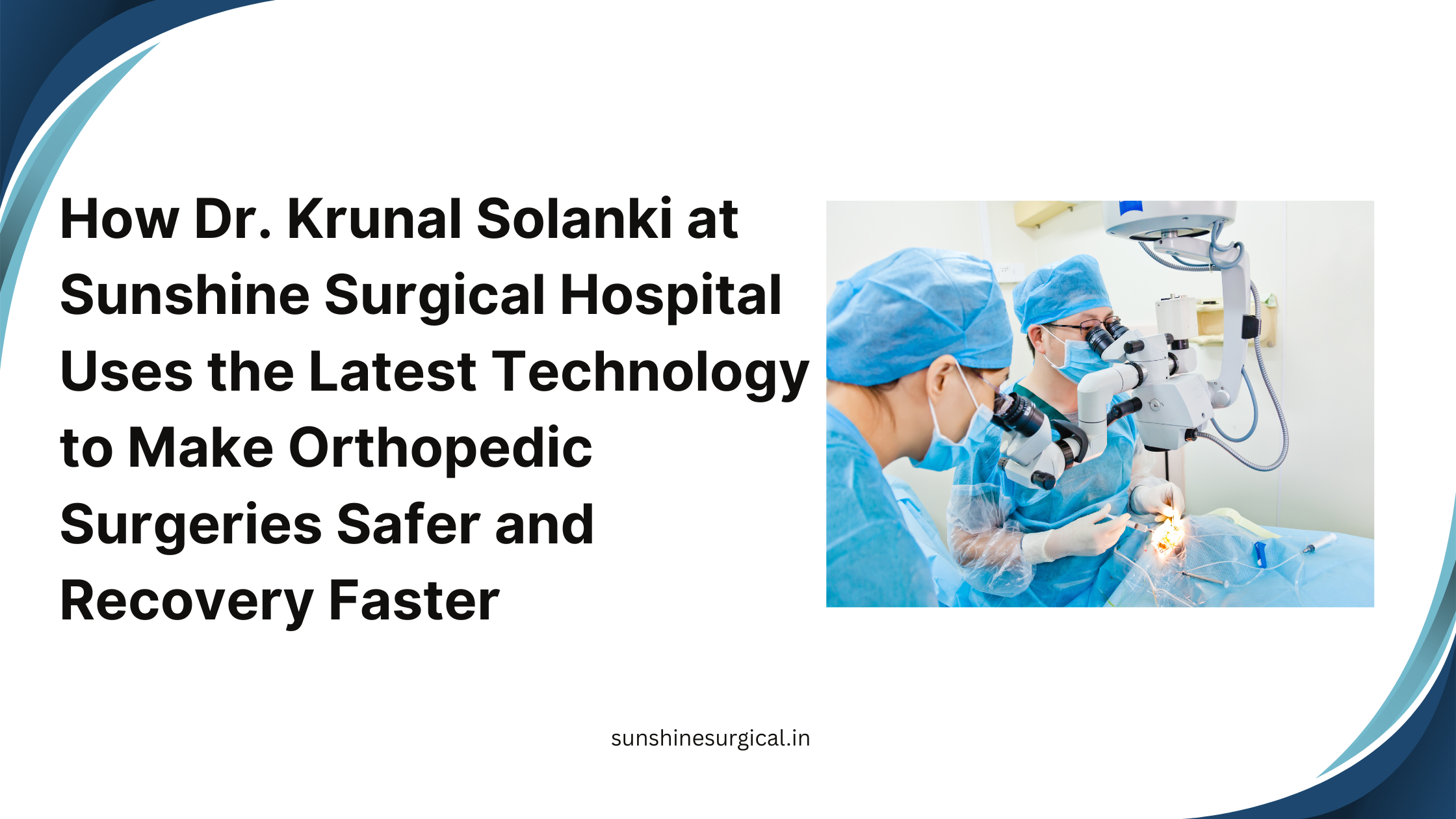 12 Jun 2025
12 Jun 2025
How Dr. Krunal Solanki at Sunshine Surgical Hospital Uses the Latest Technology to Make Orthopedic Surgeries Safer and Recovery Faster
When it comes to joint pain, injuries, or bone-related problems, people often worry about surgery. Questions like “Will it hurt a lot?”, “How long will I take to walk again?” or “Is it safe?” are very common. At Sunshine Surgical Hospital, under the expert care of Dr. Krunal Solanki, we’ve changed the way people experience orthopedic treatment. Thanks to the…
Read More "How Dr. Krunal Solanki at Sunshine Surgical Hospital Uses the Latest Technology to Make Orthopedic Surgeries Safer and Recovery Faster"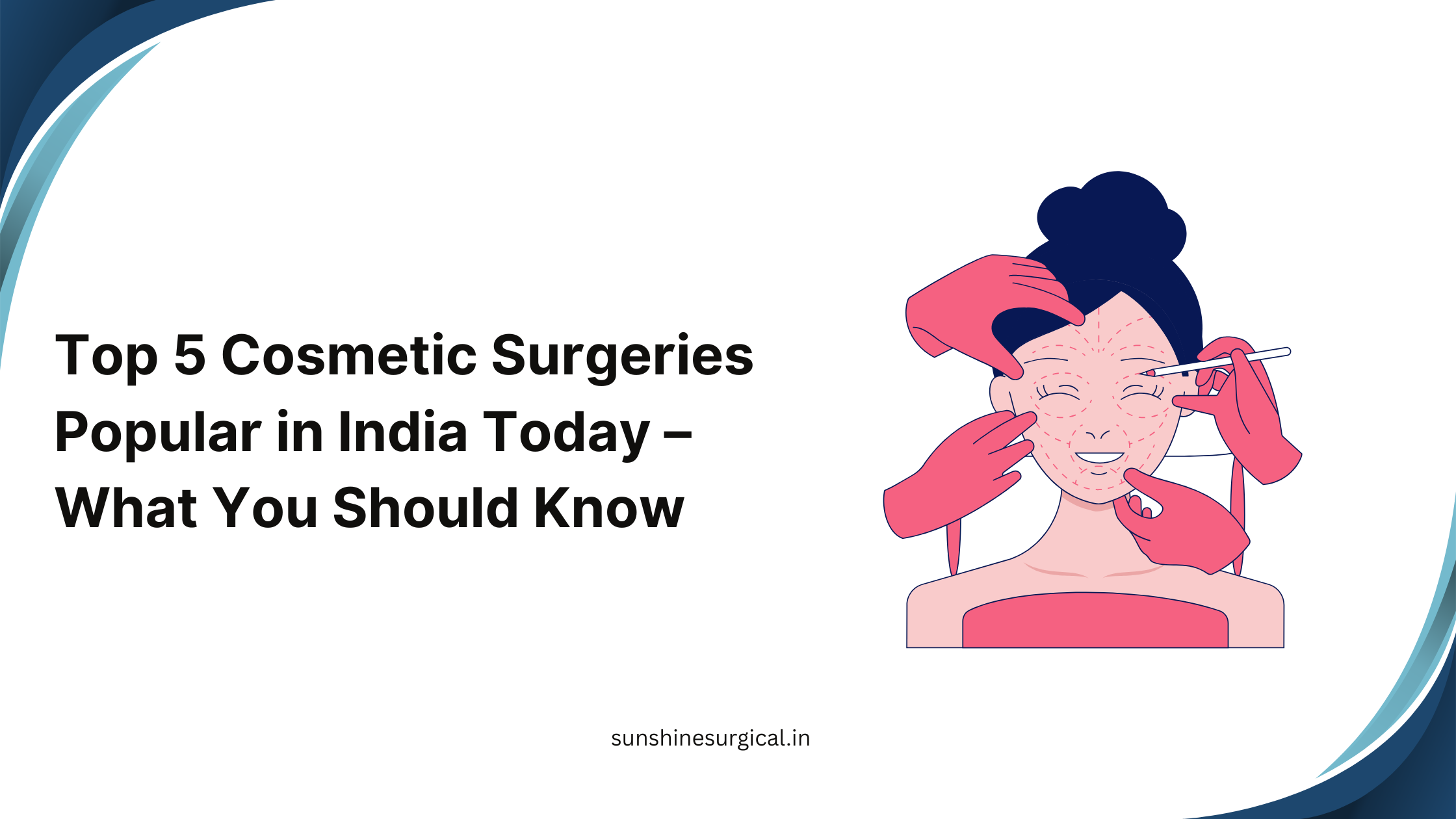 09 Jun 2025
09 Jun 2025
Top 5 Cosmetic Surgeries Popular in India Today – What You Should Know
Cosmetic surgery is no longer considered a luxury or a secret. With modern techniques, increased safety, and growing awareness, more people in India are opting for procedures that enhance their appearance and boost confidence. At Sunshine Surgical Hospital, we have witnessed a sharp rise in demand for both surgical and non-surgical aesthetic treatments. Here are the top 5 most commonly…
Read More "Top 5 Cosmetic Surgeries Popular in India Today – What You Should Know" 05 Jun 2025
05 Jun 2025
Understanding Modern Cancer Care: How Sunshine Surgical Hospital is Leading the Fight Against Cancer
Cancer is one of the most challenging health conditions faced by millions worldwide. At Sunshine Surgical Hospital, we understand how overwhelming a cancer diagnosis can be, not just for patients but also for their families. That’s why we are dedicated to providing compassionate, comprehensive, and cutting-edge oncology care to help patients fight cancer effectively and improve their quality of life….
Read More "Understanding Modern Cancer Care: How Sunshine Surgical Hospital is Leading the Fight Against Cancer"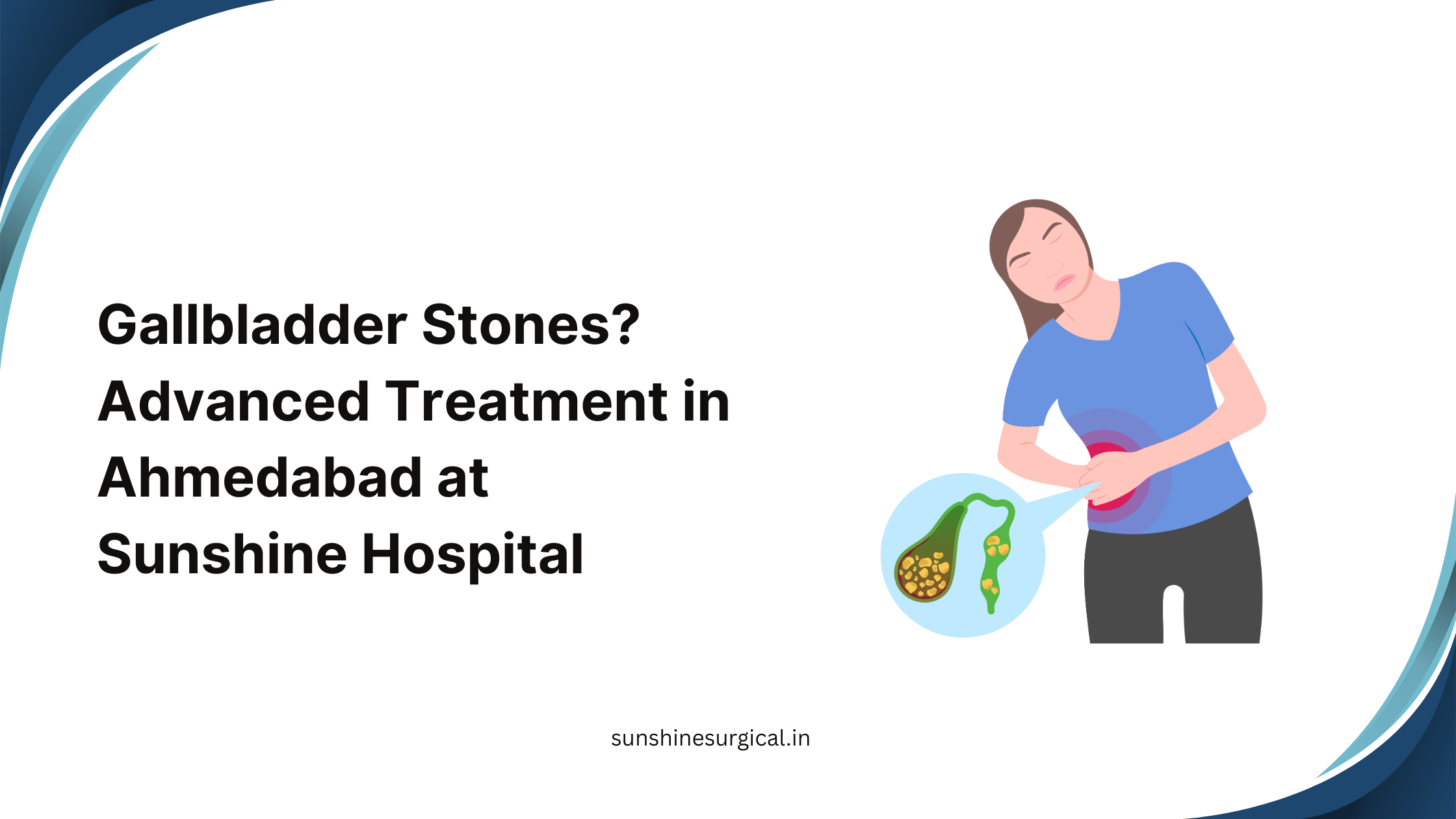 28 May 2025
28 May 2025
Gallbladder Stones? Advanced Treatment in Ahmedabad at Sunshine Hospital
Gallbladder stones, also known as gallstones, are a common yet potentially painful condition affecting people across all age groups. If you’ve been experiencing symptoms like sudden abdominal pain, nausea, bloating, or digestive discomfort after meals, it might be time to get checked for gallstones. At Sunshine Surgical Hospital in Ahmedabad, we offer advanced and minimally invasive treatment options for gallbladder…
Read More "Gallbladder Stones? Advanced Treatment in Ahmedabad at Sunshine Hospital" 15 May 2025
15 May 2025
Top Benefits of Robotic Surgery in Urology: Faster Recovery, Less Pain
In the fast-evolving world of medical technology, robotic surgery has become a game-changer—especially in the field of urology. At Sunshine Surgical Hospital, we proudly offer cutting-edge robotic-assisted procedures that improve patient outcomes and quality of life. But what exactly makes robotic surgery the preferred choice in modern urology? Let’s explore the top benefits. What is Robotic Urology Surgery? Robotic urology…
Read More "Top Benefits of Robotic Surgery in Urology: Faster Recovery, Less Pain" 12 May 2025
12 May 2025
Laser Surgery for Gallbladder Removal: A Modern Approach
When it comes to treating gallbladder issues, such as gallstones or inflammation, surgery is often necessary. While traditional methods of surgery involved larger incisions and longer recovery times, laser surgery has become a revolutionary technique, offering a minimally invasive alternative for many patients. In this blog, we’ll focus on laser surgery for gallbladder removal, exploring how it works, its benefits,…
Read More "Laser Surgery for Gallbladder Removal: A Modern Approach"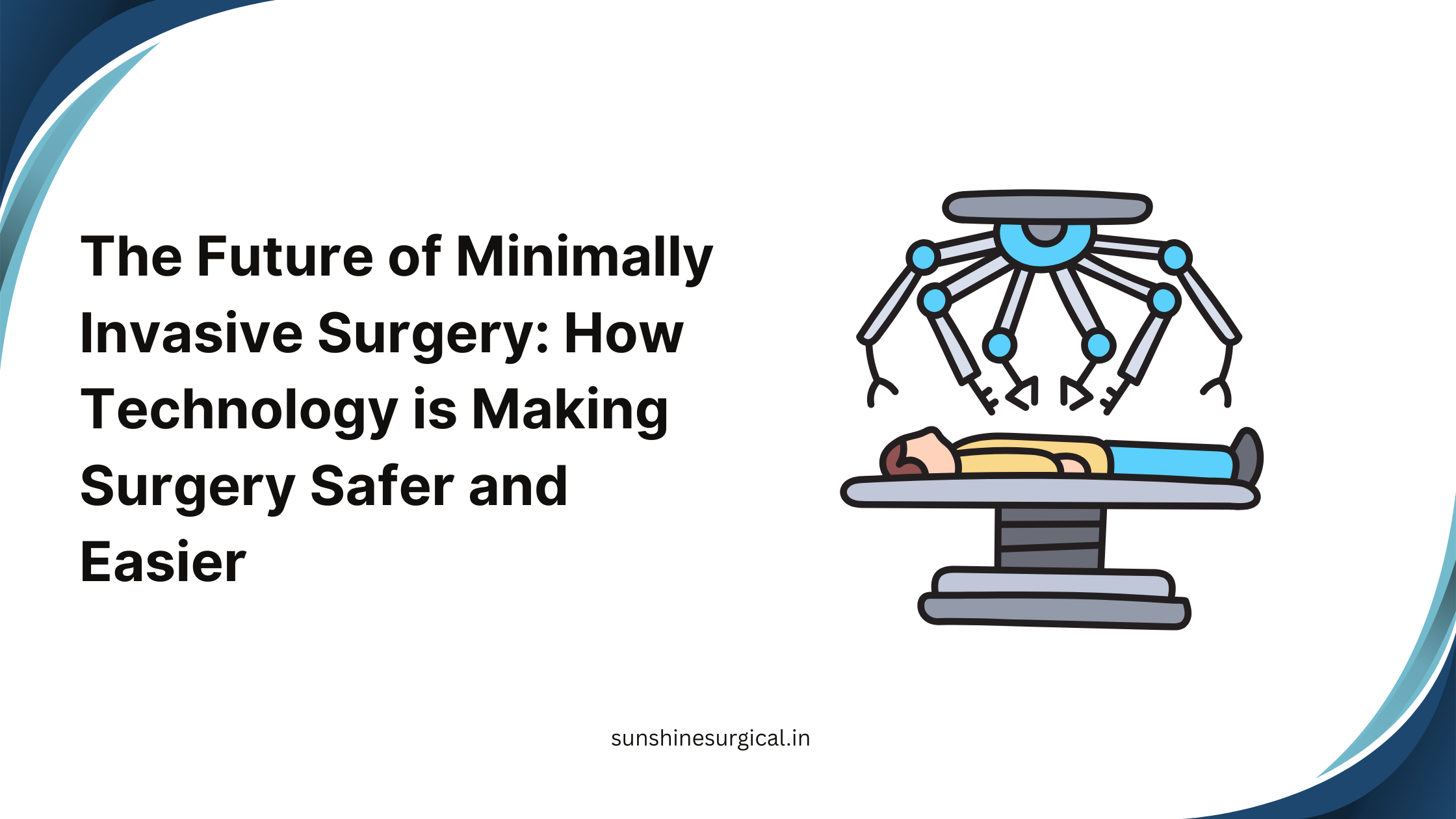 09 May 2025
09 May 2025
The Future of Minimally Invasive Surgery: How Technology is Making Surgery Safer and Easier
At Sunshine Surgical Hospital, we are always looking for ways to offer the best care possible for our patients. One of the most exciting changes in medicine today is minimally invasive surgery. Thanks to new technology, surgery is getting safer, quicker, and less painful for patients. What is Minimally Invasive Surgery? Minimally invasive surgery is a type of surgery that…
Read More "The Future of Minimally Invasive Surgery: How Technology is Making Surgery Safer and Easier"- 1
- 2